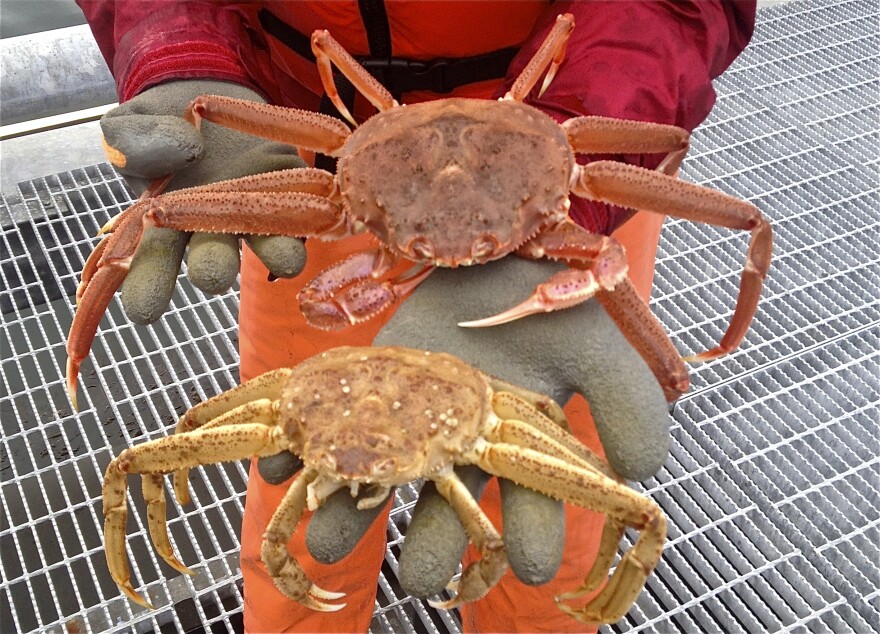Daily since late April, researchers have made their way to the end of A dock at Unalaska's Carl E. Moses boat harbor. There they pull up a series of people-sized circular nets - sort of like Japanese paper hanging lanterns - and peer inside.
Jeff Cox is a contractor for the Bering Sea Fisheries Research Foundation. Vanessa White is with NOAA's Alaska Fisheries Science Center. Both are based in Seattle and are working together on this leg of the study.
"What we are interested in is finding out more about the growth of crabs, tanner crabs and snow crabs," White said.
For the past five years, marine researchers have come to Unalaska annually to resume an on-going study of crab growth. Spring is when it's common for crabs to molt, or shed their outgrown shells in amazing feats of contortion.
Last month, the researchers chartered a fishing boat and spent seven days at sea near the Pribilofs catching over 400 juvenile crabs.
"We used a trawler, so a really small net - it's called a Nephrops net - and it's got a one-ton cod end, so a really small trawl," Cox said. "And we did short tows - five minute tows, three minute tows - we found most of these guys in the mud, actually. So we were dredging up mud and picking through mud and finding crab"
Once back in Unalaska, the team sorted them by size and placed them in separate containers, so they could measure the growth of the crabs over time.
The researchers call the containers crab condos. Each little compartment houses a single crab. What the team is looking for is when it appears that two crabs are home in the condo.

"The idea is we measure when we catch it, and then we measure it again after it molts. So you get the growth rate of the crab by getting that measure before and the post-molt measurement," Cox said.
Each crab and cell of the net is numbered and tagged for easy identification. Once a crab molts, the researchers remove the old shell from its condo. In her hand, White held a small crab and its discarded shell, comparing the two.
"So this whole part was on the inside of this, and is really soft. And that's why we wait three days before we measure it, because otherwise it will be too soft and you can't get a proper measurement on the crab until it hardens up a little," White said as she pointed at various parts of the crab's new shell.
"So you can imagine him squeezed into [the empty] shell, and then he comes out and fluffs right up and hardens," Cox added.
White said that their research will inform the big picture when it comes to determining quotas.
"It's not the only factor that goes into determining quota. Or it's information that informs quotas, is what I should say," White said.
"The more information, the better," Cox said.
This year's study period is almost done. White and Cox say they just hoped for their study crabs to complete at least one molting.
"All we want is one molt and we're hoping that 20 percent of the crabs molt, we have 80 new data points. And hopefully more than 20 percent will molt, but we'll see," Cox said.
Cox reported that most of the tanner crabs had molted at least once over the study period, but many of the opies had not. He said the NOAA and Bering Sea Foundation team is considering moving those crabs to Kodiak to extend the study over the coming weeks.



